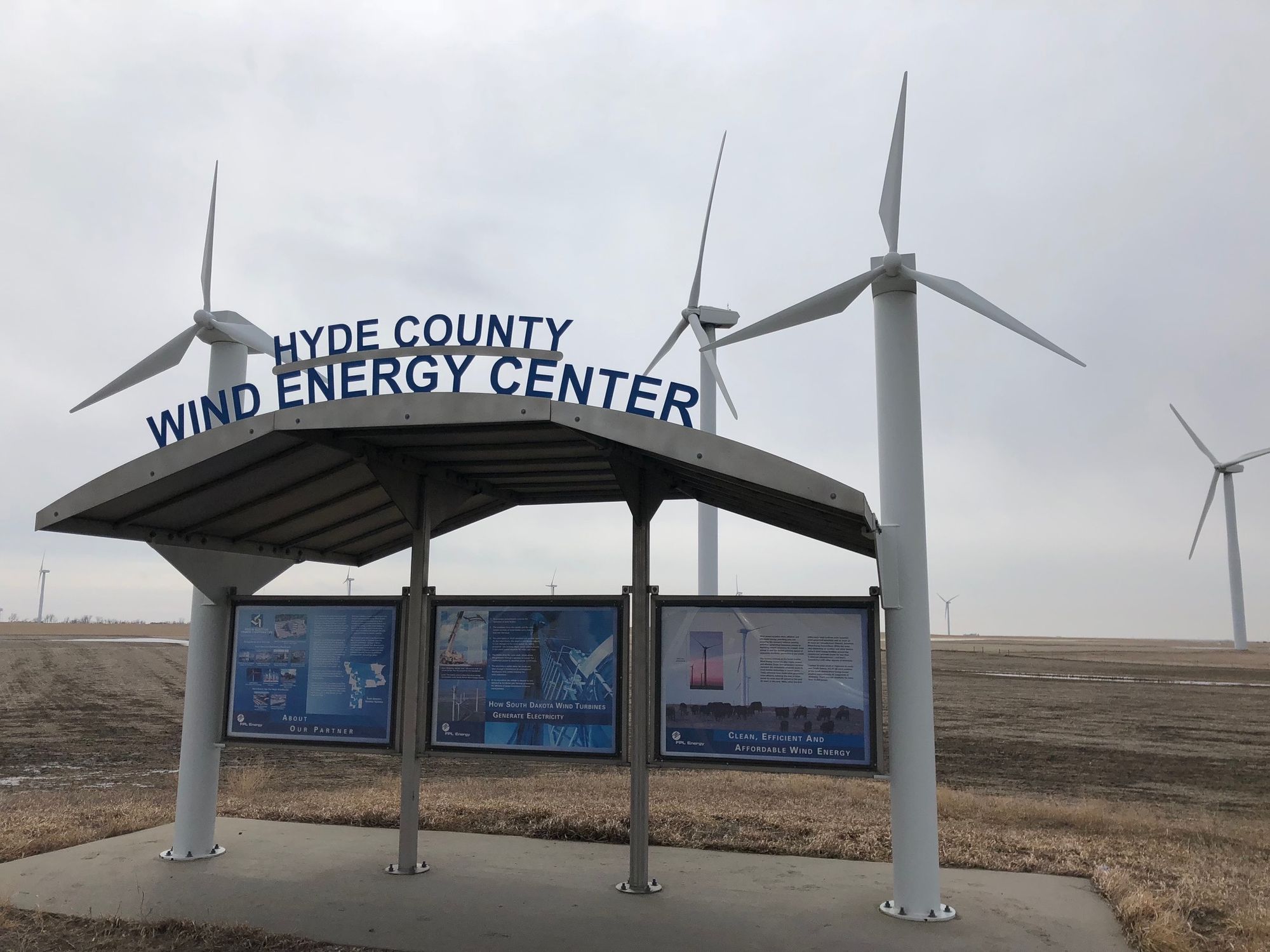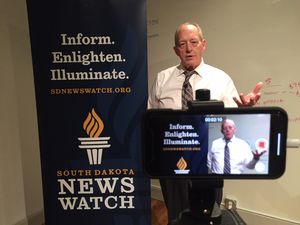HIGHMORE, S.D. – After years of lagging behind neighboring states, South Dakota is suddenly poised for dramatic growth in wind energy production.
That means hundreds more wind towers are headed to South Dakota in a frantic pace that could triple the size of the wind industry in the state over the next five years.
The wind farm explosion, akin to a “gold rush,” according to one state official, is being fueled by state tax breaks and a rush by energy companies to take advantage of a lucrative federal wind energy tax credit being phased out soon.
But more than anything, the growth in wind energy production is due to a nearly $450 million investment by energy companies to build two major power transmission lines that can carry the new electricity to established energy markets in North Dakota and Minnesota.
The wind farm growth will generate millions in new tax revenues for counties and the state and bring generous payments to rural property owners whose land sits in the path of South Dakota’s famed blustery winds.
But the expansion has come with growing pains. Opposition to wind turbines remains rigid and vocal, including disputes over two major wind farms now under consideration near Watertown and Clark. The debate over who gets the towers and the money, and whether the wind farms are right for South Dakota in the first place, has divided communities, estranged families and in some cases pitted neighbor against neighbor.
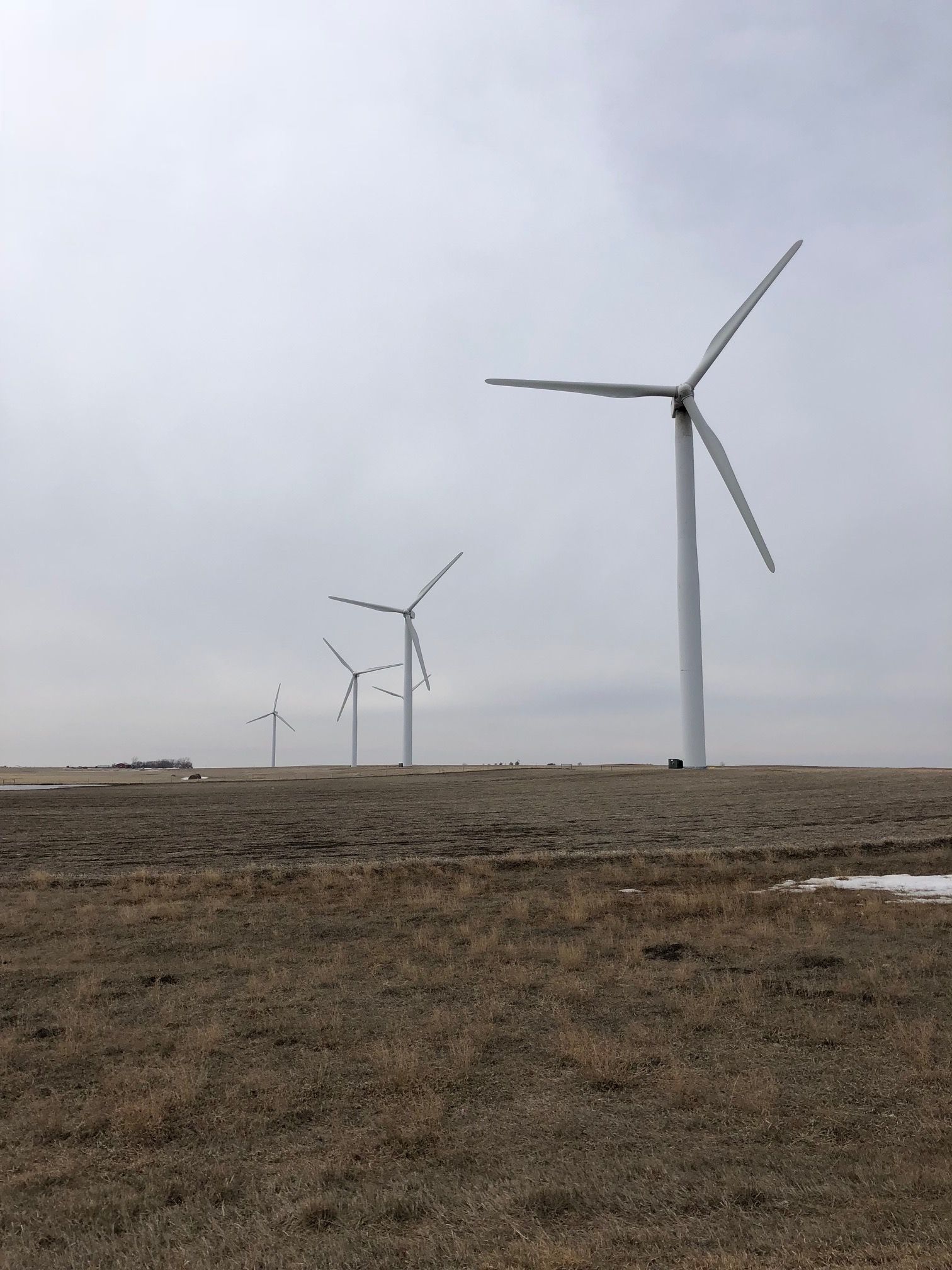
Finally, a perfect storm for wind production
For years, South Dakota has struggled to find traction in pursuing wind power.
Former Gov. Mike Rounds began to aggressively pursue wind projects through the creation of a task force in 2003. That ultimately led to passage of tax breaks on the cost of new wind turbines and blades for producers. Still, in a 2011 summer study, lawmakers determined the tax climate in South Dakota was far behind other states in encouraging wind energy development. Spurred by envy of the wind-energy tax collections and job creation in nearby states like Iowa, Minnesota, Nebraska and North Dakota, lawmakers in 2015 approved a measure to reduce the state tax on production of each kilowatt of wind energy by roughly a third.
Those small steps are now coupling with a move by the U.S. Congress to begin a phase out of the Renewable Electricity Production Tax Credit for new wind projects starting in 2020. That 10-year tax credit is a major driver of new wind projects across the United States.
The rush to obtain the full value of those tax credits has dovetailed with the construction of two 345-kilovolt power lines that will create new capacity to move electricity produced in South Dakota to markets in neighboring states.
In September, Xcel Energy and Otter Tail Power Company completed construction of a 70-mile, $140 million transmission line from a substation in Big Stone City to Brookings. That line will dramatically increase the capacity of the system to move electricity developed in northeast South Dakota to Brookings and eventually onto a $730 million transmission line running 240 miles east to a major power substation south of Minneapolis.
The final piece in the wind energy system in South Dakota is the ongoing construction of a 345-kilovolt transmission line that will run 163 miles from Big Stone City to Ellendale, N.D. That joint project by Otter Tail Power and Montana-Dakota Utilities is estimated to cost up to $300 million and could be operational in 2019. All three projects are part of the CapX2020 program initiated by a consortium of 11 utility companies in and around Minnesota to expand the energy grid across the Midwest.
“There is now the ability to get the energy to the marketplace, and that is why there’s such a tremendous interest in South Dakota and so many projects that are either on the drawing board or in the permitting process,” said Gary Hanson, vice chairman of the South Dakota Public Utilities Commission.
“You can tell that by the gold-rush attitude in development taking place right now,” Hanson said. “We could see over the next five years a tripling of the wind capacity in South Dakota. There’s definitely that potential.”
South Dakota lags behind neighbors
For years, South Dakota has trailed most of its neighbors in terms of wind energy production. But with new transmission lines being built, the Rushmore State may soon begin to close the gap. Here is a look at how South Dakota compares to other nearby states and the nation’s top producing state in terms of rank among 50 states for production, maximum megawatt potential, wind farm projects and number of turbines.
- Texas: No. 1 ranking, 22.637 MW, 136 projects, 12,494 turbines
- Iowa: No. 3 ranking, 7,308 MW, 107 projects, 4,134 turbines
- Minnesota: No 7 ranking, 3,699 MW, 97 projects, 2,427 turbines
- North Dakota: No. 11 ranking, 28 projects, 1,611 turbines
- Wyoming: No. 16 ranking, 1,489 MW, 22 projects, 1,005 turbines
- Nebraska: No. 17 ranking, 1,426 MW, 23 projects, 785 turbines
- South Dakota: No. 19 ranking, 974 MW, 13 projects, 566 turbines
- Montana: No. 24 ranking, 695 MW, 15 projects, 479 turbines
Sources: American Wind Energy Association, South Dakota Public Utilities Commission
So far, South Dakota is home to 13 significant wind farm projects with a combined 566 turbines that can produce a maximum of 974 megawatts of electricity. South Dakota ranks second in the nation in terms of how much of its overall energy production is from wind (just over 30 percent), and about 290,000 homes are powered by wind energy.
But the state only ranks 19th in its ability to produce electricity from wind and in the number of operating turbines. The state trails five of its six neighboring states in terms of wind energy production. Iowa, for example, ranks third in the nation behind Texas and Oklahoma for wind production. Each turbine in operation and each megawatt of electricity produced leads to new tax revenues for the state and county where wind farms are located.
Hanson and his PUC colleagues are already experiencing an influx of interest from wind energy companies, with one new wind farm already approved on land near Newell on the western side of the state, and two major new wind farm projects under consideration in the northeast corner of the state. But if recent meetings are any indication, the approval process is sure to be bumpy.
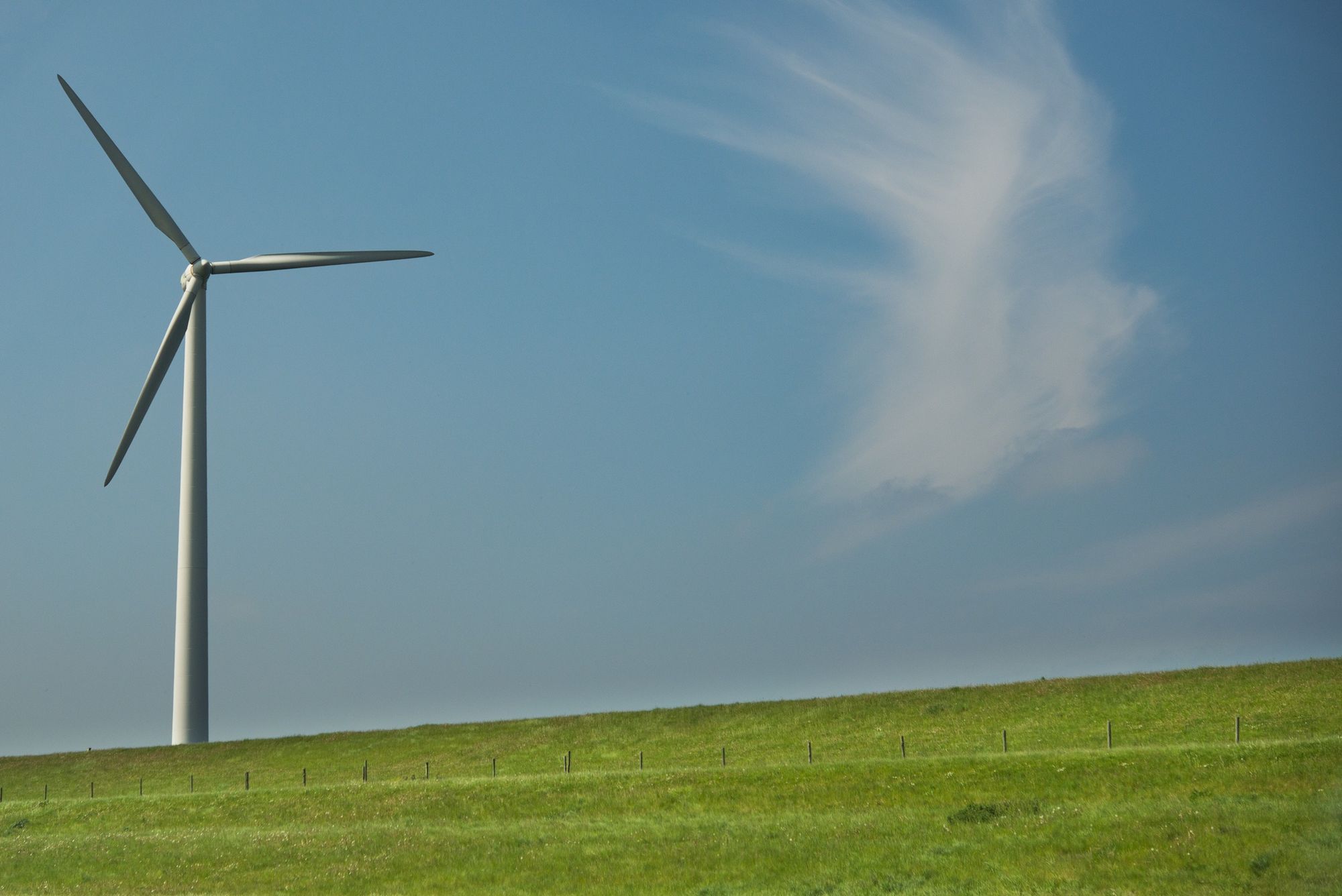
Wind farm proposals blowing in
In South Dakota, the elected members of the PUC have responsibility over regulating new wind farms to ensure the developer follows all state and federal laws, and answers any questions posed by the commission. As a regulatory agency, the PUC is obliged to approve wind farms if energy companies meet all the requirements in state law, Hanson said.
But significant siting decisions are also made at the county level, including the distance of so-called setbacks that determine how close wind farms and towers can be from existing properties or from cemeteries, for example.
Both of those processes have been contentious of late. During debate over the proposed Willow Creek Wind Energy project near Newell in Butte County, a group of opponents launched a Facebook page full of postings and articles showing the apparent dark side of wind farms. The lead image on the page is of a dead bald eagle with blood visible around its head. The PUC has approved a construction permit for 45 wind turbines at the site.
Two dozen or so opponents testified at recent PUC hearings regarding two pending applications for new wind farms – the 72-turbine, 302 megawatt Dakota Range I and II project by Xcel Energy in Grant and Codington counties; and the 120-turbine, 400 megawatt Crocker Wind Farm project by Geronimo Energy in Clark County.
Both projects would be larger than others now in operation in South Dakota, and both would create major economic impacts for the surrounding communities and the state, according to PUC application materials.
The Dakota Range I and II project would require a nearly $400 million investment by Xcel Energy and create 300 temporary jobs during construction and about 10 full-time positions. According to the company, the project located on 44,500 acres about 10 miles northeast of Watertown would, over its 25-year lifespan, generate $39 million in lease payments to local landowners, $36 million in taxes for schools and state and county governments, and result in $17 million in employment spending. Codington County would receive about $80,000 a year in new tax revenues, Grant County would see about $280,000 a year and the state would receive about $420,000 in annual tax revenues, the company said. The wind towers could reach 270 feet in height and begin operating in December, 2021.
The Crocker Wind Farm would require a roughly $600 million investment by Geronimo Energy and create 250 temporary construction jobs and up to 18 full-time permanent positions. The project would be located on 29,331 acres of land eight miles north of Clark. Over the first 20 years of its 30-year projected lifespan, the project would generate $46 million in lease payments to landowners, $36 million in taxes for school districts and state, county and township governments and generate $24 million in employment payments. Clark County would receive about $462,000 a year in taxes and the state would receive about $480,000 a year in new taxes, the company says. The wind towers would be about 310 feet tall and could begin production in the fall of 2019.
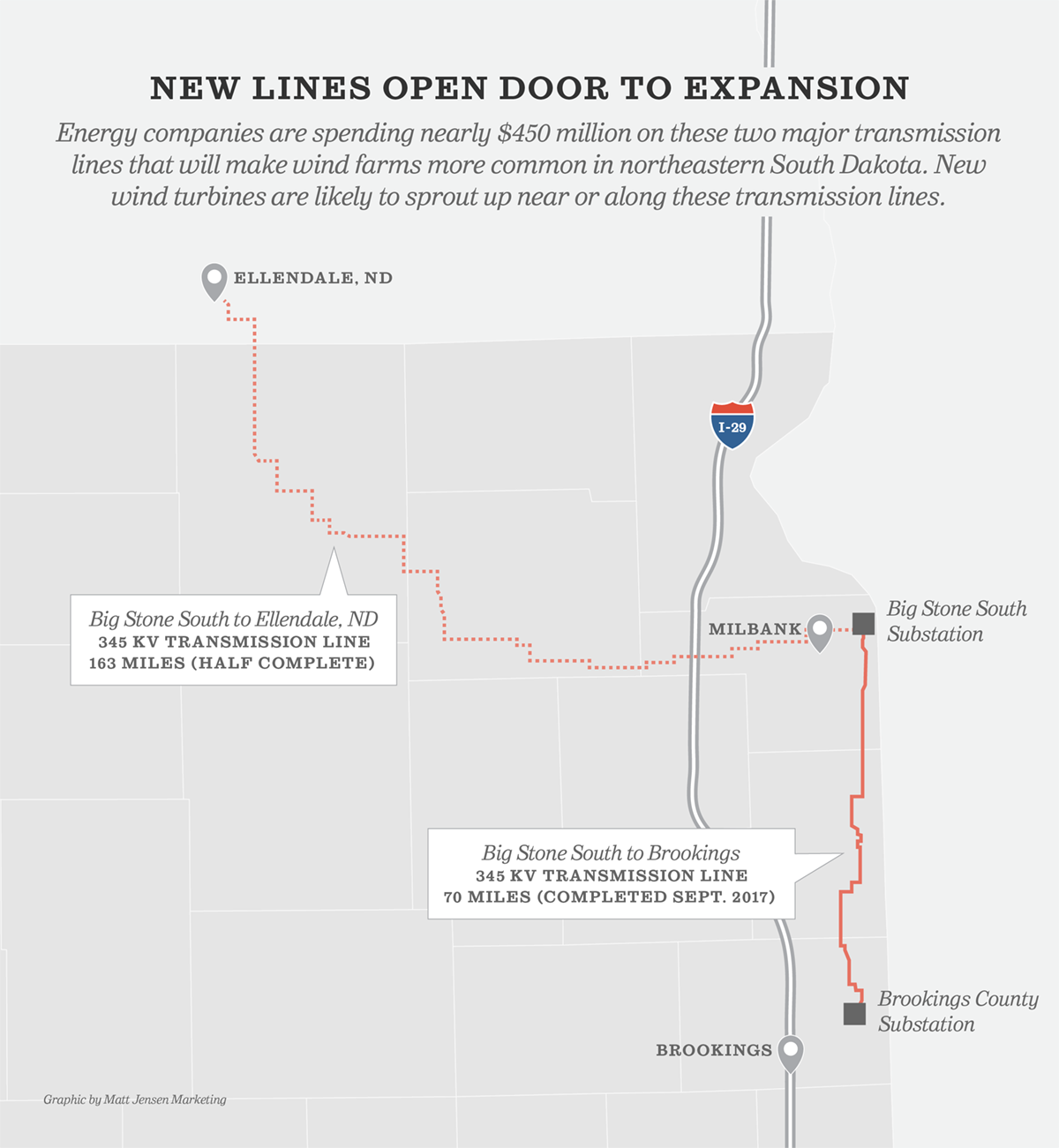
Both the Dakota Ridge and Crocker projects are still under consideration by the PUC.
Supporters of both projects generally fall into two categories: landowners who would be likely to receive lease payments, and people who support renewable energy and the tax revenue the projects would bring to the state and local communities.
Dave Finstad, 74, lives west of Bradley not far from the Crocker project site. He testified to the PUC in favor of the project and said in a later interview that he believes the wind towers will create a minimal impact on the landscape while fueling growth in local schools and government.
“There’s a possibility of getting some really good income for our county and schools, and people can get some extra income off their land,” said Finstad. “They’re not going to hurt anybody.”
But Wendy Crabtree, a retired teacher from Bradley, has equally strong feelings against the proposed Crocker wind farm. Crabtree holds many of the views common to opponents: the towers are unsightly and will mar the landscape; the turbine blades are loud, cast bothersome shadows and can kill birds; the permitting process is not honest or open; energy companies only want government subsidies; foreign interests are benefiting from the projects; and that wind farms harm area property values.
“Somehow, we’re going to end up with wind towers right on top of a wildlife production area,” Crabtree said. “This is a unique area here, and I don’t want to be living out here in an industrial park.”
For each of those arguments, supporters of wind energy, including the development companies, can cite studies or statistics to support their positions and denounce opposing views. Opponents often offer their own contradicting studies or anecdotal reports to show that wind farm backers are in error.
Hanson, the PUC commissioner, said it saddens him to see how the wind farm proposals divide communities and sometimes families. “It has really fractionalized communities,” Hanson said. “To see citizens who are going to the same church, playing on the same sports teams and cheering for each other, and helping each other when there’s a challenge, to see the tremendous animosity that exists in some areas is a very sad situation.”
Crabtree said she once called the sheriff to control an escalating situation that took place when a supporter of wind farms drove onto an opponent’s yard and began shouting.
Finstad said he was in line to have a wind tower on his property and receive the related lease payments until opponents convinced the Clark County Commission to increase the setback for wind towers from neighboring properties from 1,000 feet to three-quarters of a mile. His neighbor, who is also a relative, was part of the opposition group that deprived him of his opportunity to get a tower.
He said he doesn’t hold a grudge but acknowledged the wind farm debate caused “a riff” in the community. “It’s unfortunate that as rural people, we seem to have a tougher time with these kinds of thing,” he said. “Some of them will take those feelings to their grave.”
But if new wind farms are approved, neighbors on opposing sides of the issue may find solace that peace mostly prevails in the rural area around South Dakota’s first wind farm.
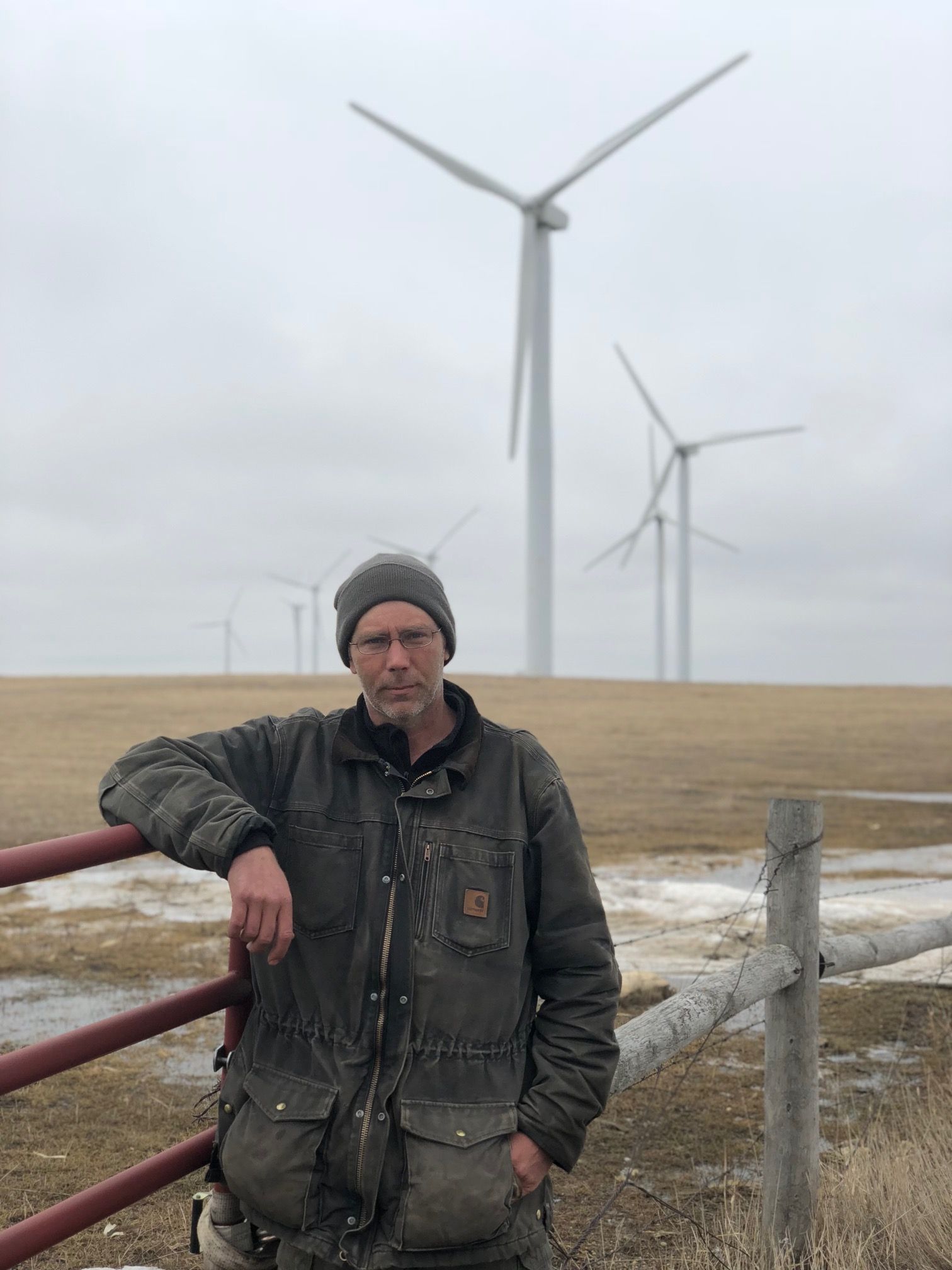
Hyde County project humming along
On a remote stretch of state Highway 47 about midway between Mac’s Corner and Highmore in southern Hyde County, the prairie lands rise to a plateau that is home to some of South Dakota’s strongest and most consistent winds. Experts with Florida Power & Light determined the average wind speed at that spot is nearly 20 mph, making it a prime location for South Dakota’s first wind farm that FPL began operating in 2003.
While the wind on a recent day was only a mild zephyr in Fort Thompson, about 20 miles to the south, the gales blowing at the wind farm known as the South Dakota Wind Energy Center were howling.
There, 27 wind towers standing 213 feet tall were installed in an east-west line in 2003 and each began generating 1.5 megawatts of electricity. At peak efficiency, the 110-foot turbine blades generate enough electricity to power more than 12,000 homes, about 18 times the number of homes in Hyde County.
Unlike the contentious debates surrounding the approval of new wind farms elsewhere in South Dakota, the Hyde County operation was mostly welcomed by locals and greeted with fanfare at a grand opening celebration.
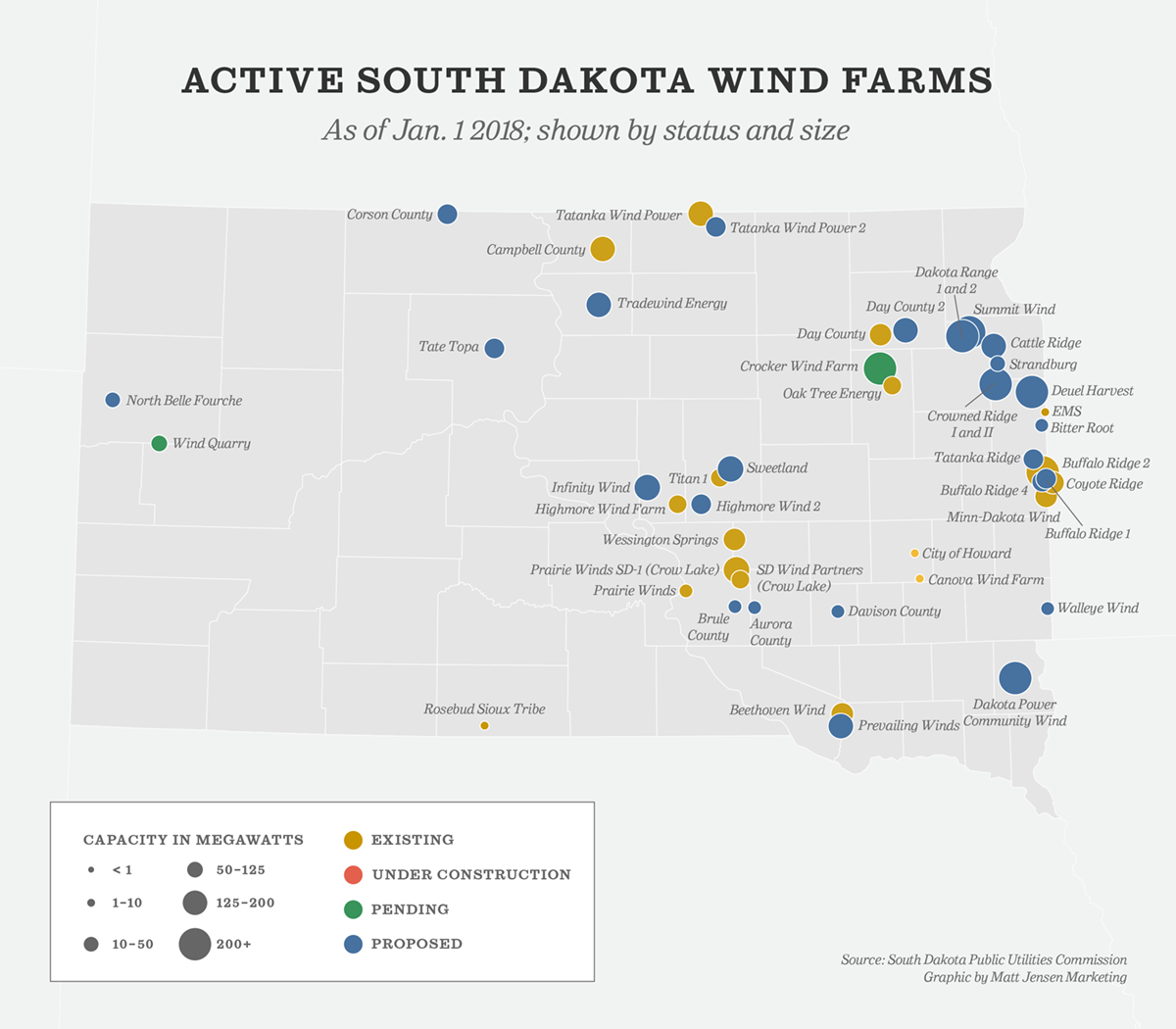
The wind farm has been a boon to both local property owners and the county. Hyde County Assessor Carrie Stephenson said the wind farm and its components form the county’s largest source of property tax revenue. Each turbine is valued at about $240,000 and the electricity substation is valued at $1.3 million; together they generate about $90,000 a year in property taxes for Hyde County, Stephenson said.
Other wind farm proposals have come forward in Hyde County, including one that would have brought 100 more turbines. But the county has enacted a six-month moratorium on new wind farm development as it seeks to rewrite its planning and zoning regulations surrounding siting and operation of wind farms, Stephenson said.
The only negative news generated by the operating wind farm came in April, 2014 when a small plane flying in thick fog crashed into one of the towers, killing the pilot and three well-known South Dakota cattlemen on board. The National Transportation Safety Board ruled that the crash was due to poor weather conditions and a malfunctioning light on a wind tower.
The handful of property owners who signed 25-year lease agreements allowing FLP to install the towers on their land get a check each year that state officials at the time estimated would be about $3,000 to $4,000 per tower (the project is now operated by FPL subsidiary NextEra.)
A landowner in Clark County where a new wind farm has been proposed said he was shown a lease agreement on more modern wind towers that provided the property owners closer to $8,000 a year for each tower sited on their land.
Jason Runestad, 41, is a cattle rancher who has eight towers on his family’s 1,300 acres of land in Hyde County. Runestad said the wind towers and turbines create very little impact on his land or his lifestyle.
As he walked the land beneath a wind tower on a recent afternoon, he pointed to the many rocks and boulders that dot the prairie land and draws around his ranch. He said the towers create a use for his land that is otherwise of little value agriculturally. The frigid winters and high winds in the area, coupled with the rocky, rolling terrain make the land good only for grazing cattle, Runestad said.
“After a certain point, you don’t really notice them anymore,” Runsetad said. “The income is nice, and they don’t really take up much space.”
Though the blades sometimes kill a bird, he said it is rare. As they turn, the blades emit a low humming sound that is often drowned out by the howl of the high winds that buffet his ranch, he said. In the late afternoon sun, the blades throw moving shadows on the land, but nothing that bothers him or his livestock. Ice will sometimes fly off the blades during winter storms, but it falls harmlessly onto the ground, he said.
He said he understands and appreciates the arguments made by opponents of wind farms, but he calls their concerns “exaggerated.”
Plus, Runestad urged people to consider the environmental benefits of wind farms over coal plants or other ways of generating electricity. He said he supports the siting of more winds farms in South Dakota.
“It’s a source of green energy, which is a big deal,” he said. “And anything that brings in good money for the state of South Dakota is a good thing.”
